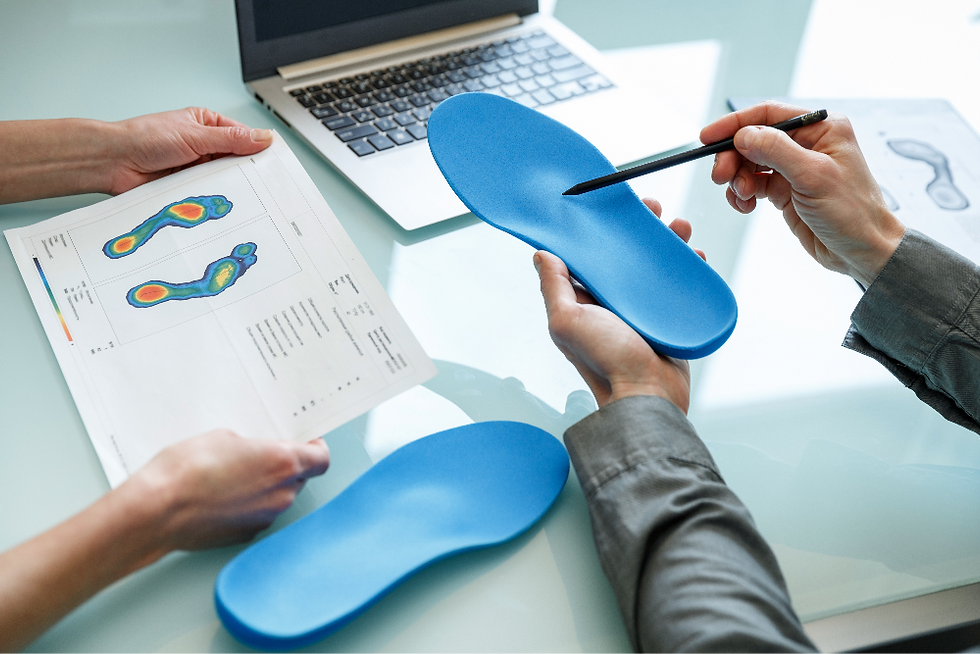In recent years, wearable technology has transformed healthcare, and podiatry is no different. Thanks to advancements in smart devices, podiatrists now have tools that enable continuous monitoring and real-time data collection, even when patients are outside the clinic.

These innovations not only enhance patient outcomes but also allow podiatrists to deliver more tailored and effective care. According to Dr. Rob Hermann of Adelaide Foot and Ankle Clinic,
Our podiatry clinic has been closely following the evolution of wearable devices like smart insoles and foot pressure sensors. We've found that incorporating these technologies into our practice can: - Enhance patient engagement: Patients are more likely to adhere to treatment when they can visualize data about their progress. - Improve diagnostic accuracy: Continuous monitoring offers more detailed insights than a one-time clinical evaluation, helping us tailor interventions more effectively. We've successfully used smart insoles as remote monitoring tools for patients recovering from foot surgeries or managing chronic conditions like diabetic neuropathy.
As wearable technology continues to evolve, it will impact the diagnosis, treatment, and prevention of foot-related conditions. This article will explore the types of wearable technology available today and the benefits they can provide to podiatrists and specialists. We hope the insights provided about these tools can help you enhance your patient care.
Understanding Wearable Technology in Podiatry
Podiatrists can use foot health wearables to gather patient data, then use that data to identify risk factors/trends and adjust treatment plans. In podiatry, wearable tech generally involves devices like smart insoles, ankle monitors, and sensor patches that monitor various aspects of foot health.
Smart Insoles:
The most common type of wearable, smart insoles are designed with sensors that monitor metrics like pressure distribution and gait patterns. Smart insoles can give podiatrists insights into issues such as overpronation, imbalance, or abnormal weight distribution. They are especially helpful in preventing injury or diagnosing and managing conditions like plantar fasciitis or metatarsalgia.

Remote Monitoring Socks:
These socks are designed to reduce the risk of foot complications from conditions like Charcot foot and diabetes. It can help prevent major problems such as ulcers and amputations by continuously tracking foot temperature. Temperature data is significant and can indicate early inflammation. These socks allow for early detection and intervention, which is crucial in preventing severe injuries for high-risk patients.

Wearable Sensors and Patches:
Wearable sensors can be attached to footwear, AFOs, and even knee braces to monitor rehabilitation progress by giving insights into patients' movement patterns, gait, motion, pressure distribution, muscle activity, and more!

By continuously tracking important patient data, these devices enable podiatrists to obtain a clearer picture of a patient’s condition outside of clinical visits
The Benefits of Wearable Tech
Across podiatric care, several case studies and clinical applications have shown the success of wearables in improving patient outcomes. For podiatrists, the primary benefit of wearable technology is the ability to gather continuous, accurate data on patients’ foot health to assist in treatment options. Below are some success stories of wearable tech in action:
Challenges with Wearables
Wearable technology in podiatry has brought about a new frontier in patient monitoring and care. However, as with most technologies, implementing these technologies in clinical practice comes with notable challenges. Below are some things to consider when adopting these new wearables into your podiatry treatments.
Conclusion
To close, wearable technology in podiatry has the potential to revolutionize patient care by providing continuous, real-time insights that empower both patients and clinicians. Smart devices not only enhance patient engagement by encouraging individuals to monitor and manage their own health, but also enable podiatrists to make informed, data-driven decisions based on metrics captured in the patient's everyday environment.

Wearable technology supports doctors with taking preventive action or customizing patient treatment based on real-world data. Although there are challenges in integrating these technologies, the benefits to patient care and preventative strategies makes wearables a valuable asset in modern podiatry practice.
What are some podiatry technologies that you are excited about adding to your practice? Let us know what you would like to hear about in the future!


Comments